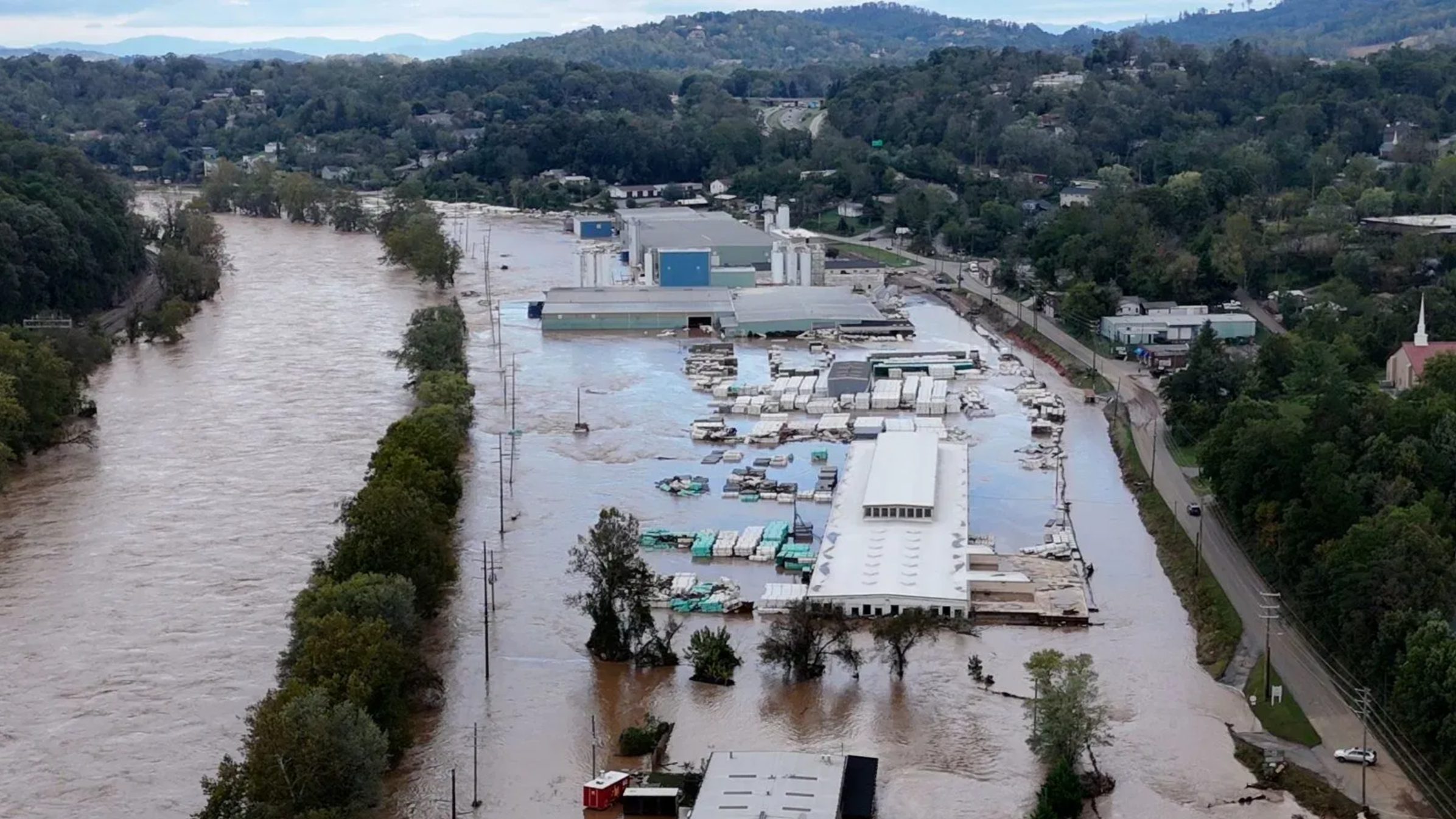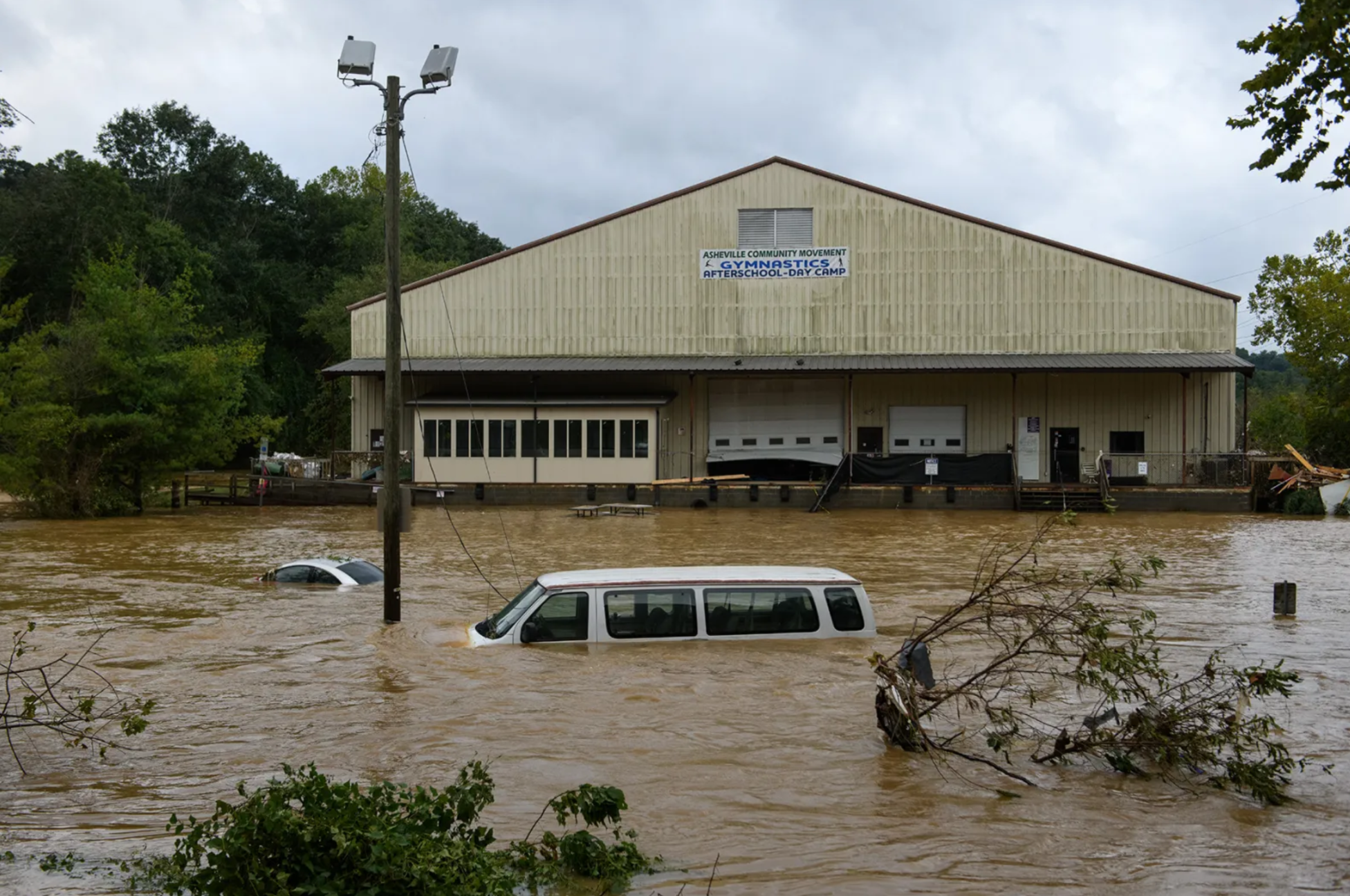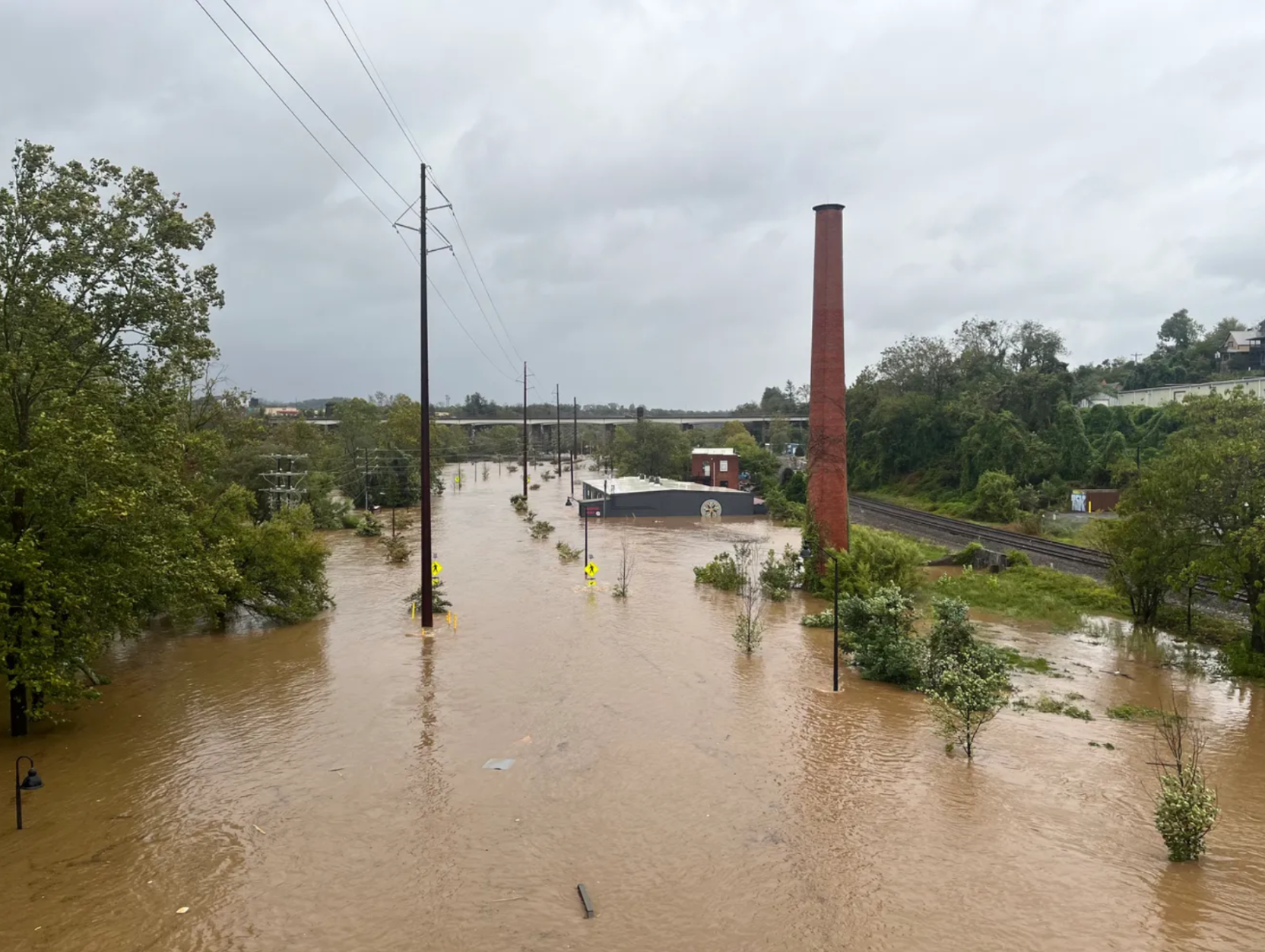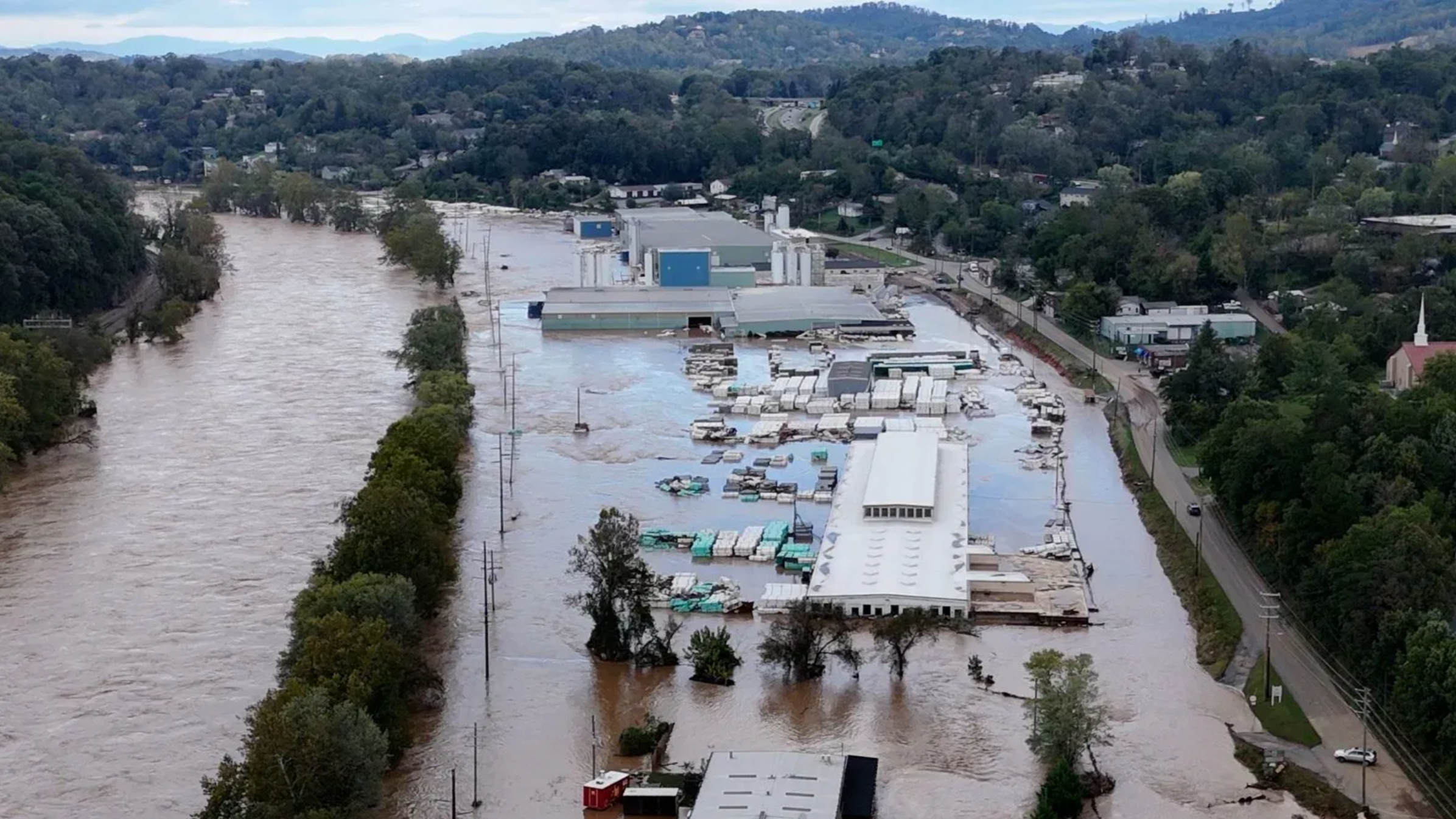
By Laela Cash, Stentorian Editor-in-Chief
Editor’s Note: This article was initially planned to be published in October 2024. Due to unprecedented circumstances, it was pushed back to be published in February 2025. The editorial board has decided to publish this article again corresponding with the print release.
On September 27, 2024, Hurricane Helene hit Western North Carolina only two days after it made landfall in Florida. The result? Record-breaking flooding and destruction that most would have thought impossible for an area roughly 500 miles away from the ocean. While not only the Western part of the state was affected, it was definitely hit the hardest.
In total, 4.5 million people lost power in a week from the hurricane with 1.5 million of those being in North Carolina, according to USA Today. On September 27 alone, there were six confirmed tornadoes across the state with one as far east as Rocky Mount according to the North Carolina State Climate Office. But that was only the beginning.
The Climate Office also reported that most Western counties got at least a foot of rain, with many reaching over two feet–effectively getting three months’ worth of precipitation in three days. Some areas including Busick, located in Yancey County, got almost three feet. Because of this, rivers including the French Broad, Watagua, Swannanoa and Catawba, almost immediately reached major flood levels and above. This nearly-submerged many towns including Asheville, Black Mountain, Boone, Morganton and Swananoa started to fill with feet of excess water.
The NASA Earth Observatory recorded that the French Broad reached a height of 24.7 feet which is a foot higher than the previous record while the Swannanoa River reached a height of 26.1 feet breaking the previous record by over six feet.
Asheville flooded rapidly as water flowed down from areas with higher elevation creating landslides along the way. Many areas became completely inaccessible almost immediately, as water breached rooftops.
At the same time, the Broad River basin was flooding, resulting in authorities attempting to evacuate areas downstream if the Lake Lure Dam broke while waves of water and debris hit the towns of Chimney Rock and Lake Lure. In total, AP News reported that the hurricane brought a total of 40 trillion gallons of water to the Southern United States.
It wasn’t only flooding that was breaking records. ECONet weather stations measured wind at a speed of 106 miles per hour on Mount Mitchell, making it the highest recorded since 2011. Similarly at Frying Pan Mountain, winds of 87 miles per hour were the highest recorded since 2004.
Such high winds inevitably led to more dangerous conditions and extreme property damage in addition to flooding. Most roads were immediately closed and travel bans were immediately put in place for the entirety of Western North Carolina. Many counties also enacted curfews to limit unnecessary traffic that may impede the travel of emergency vehicles on the remaining roads that were still accessible.
While rescue efforts started immediately, it was a long time before the full extent of the damage was realized and the timeline of recovery is still unsure. However, in the wake of this deadly storm, there has been a lot of false information spread about the aftermath. In order to understand the impact that this hurricane has had on communities in Western North Carolina and to grasp the magnitude of the crisis, it is necessary to understand the factors at play and the extremity of the events.

Immediate Aftermath
As the rain started to let up, the full implications of the last three days set in. In the coming days and weeks, emergency services and hundreds of volunteers worked tirelessly to rescue people. These efforts were especially difficult in remote areas that were only accessible by roads that were more or less obliterated.
According to The New York Times as of October 22, 2024, across the six states that the hurricane plowed through, more than 200 people have been killed as a direct result of the natural disaster. In North Carolina alone, the death toll is at 96 with 42 of those being from Buncombe County with 26 people who are still reportedly missing.
According to AP News, hospitals almost immediately become overwhelmed. Additionally, many were running on backup generators after the power went out and therefore had limited capabilities while some had to close completely. Mission Hospital in Asheville set up mobile units in the days after the hurricane, offering showers, handwashing stations, and free food, water, and toiletries. According to WRAL News, these tents were only possible because of federal relief and they also allowed the hospital’s staff to treat more people. This was extremely necessary as the hospital was reportedly over 200% capacity on September 27.
While some may regard property loss as more easily replaceable compared to lives, property damage is still life-changing. Governor Roy Cooper’s administration released a statement on October 23 estimating 53 billion dollars in damage.
Almost everyone who was lucky enough to still have their homes lost electricity, water, and cell service. Two weeks after the hurricane, roughly 14,000 people still did not have power in the state according to NPR. Many people, especially those in the Asheville area, went even longer, according to the city. However, Citizen Times reported as of October 18 that only 95% of that water is potable and therefore everyone is being told to boil their water. Without the internet, many people turned to Starlink as their only way to communicate with their loved ones.
Even so, many people did not have the option of getting away from these conditions, not only did they not have the resources to do so but also because the roads were destroyed in many cases, according to the Asheville Citizen Times.

Why Was Helene’s Impact So Surprising?
According to BBC Weather, one of the reasons that the storm’s large impact was unexpected is due to how rapidly it grew. It drew a great deal of its energy and momentum from warm waters in the Gulf of Mexico.
The local News and Observer interviewed head of N.C. State University’s Marine, Earth and Atmospheric Sciences department Gary Lackmann in order to answer this question. He stated that these waters were warmer than usual due to global warming saying that the Gulf of Mexico had a surface temperature of 86.7 degrees Fahrenheit, which is over two degrees higher than the average previous average, while the hurricane was forming. He explained that water vapor, created due to warm ocean temperatures, fuels hurricanes.
Right before the hurricane hit Florida, it quickly strengthened from Category One to Category Four in just a few days. This hurricane in particular, also had a much larger cloud cover and wind field compared to others, reported BBC. However, this does not entirely explain why the hurricane reached the usually unaffected Appalachian mountains.
Why Did Residents Not Evacuate?
One of the largest reasons is that the Western part of the state is rarely majorly affected by hurricanes.
Some people were entirely unaware that the storm was coming because they did not expect it to become so relevant to their safety. Most eyewitness and news sources say that the last time a hurricane substantially hit the Appalachian Mountains was in 2004. So, not only were many new residents unaware of this possibility, but even people who had lived through hurricane damage in 2004 would’ve believed that another would be an unlikely occurrence. This was further extenuated by the fact that the hurricane grew very quickly giving residents little time to adequately prepare or make evacuation plans.
Additionally, according to the Washington Post, disaster experts evacuation would have been extremely difficult if not impossible based on the terrain and geography especially because there are often only a few ways to get in and out of remote, mountainous areas. Also, there are no evacuation routes designated by round, blue signs like there often are in coastal communities. For that matter, there are also no flood sirens due to the general lack of flood prevention infrastructure.
Western North Carolina is known internationally for our beautiful forests and mountains, but Hurricane Helene brought devastation to ways of living and infrastructure on a scale no one could have predicted. The floods washed away not just homes and businesses, but the sense of safety and security that the mountains once offered.
Families are now left piecing together shattered lives in a place that once seemed untouched by such catastrophic storms. The road to recovery will not only be long but also a challenge as they rebuild what was lost and grapple with speculation of what factors intensified the aftermath in the first place. Yet, amidst the destruction, there is resilience—in time, the communities of Western North Carolina will rebuild as they already are working with help from the many volunteers who have stepped up to help and donations from across the country.
As someone from Western North Carolina, I urge you to do your research–this is only an overview of the full story. Everyone’s experiences are different and important. And after understanding that many people lost everything in just a few days, please help in any way that you can. We will link additional resources on our website to help you do so.

Leave a Reply